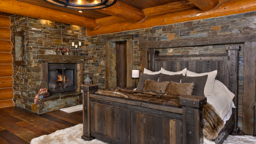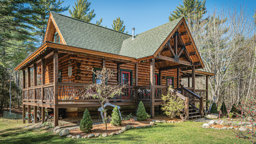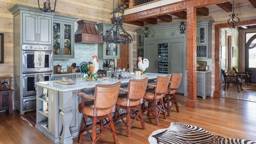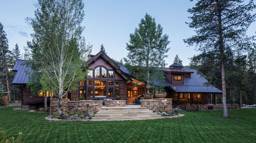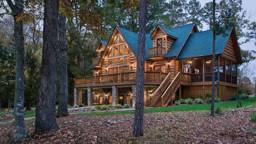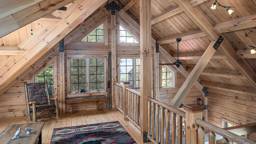
A floor plan is the first step toward making your log home happen. It’s a two-dimensional picture that shows the relationships of rooms, their sizes and how they flow into each other. The best part about this very important phase of the design process is that it lends itself to frequent revisions without entailing any cost. In fact, many so-called custom plans are actually modified floor plans of already built homes.
This fact suggests that if you’re uncertain how a log home might be laid out (fewer halls, open rooms, etc.), you may familiarize yourself with successful layouts, both in this magazine and on different log-home websites, including our own, where you’ll find thousands for all sizes and budgets. Meanwhile, here are 10 steps to design a workable plan for your home.
1. Chart your lifestyle.
Consider the makeup of your family (adults only, adults and kids, aging parents), how you live (formal or casual, hectic or relaxed), whether you like to entertain or have special hobbies that require dedicated space. A lifestyle outline will tell you how you feel about your home and its basic plan. For instance, a casual couple won’t need a formal entry or dining room, while high-octane families might consider including cozy, tranquil spaces to regroup.
See also: How Log Home Trends Have Evolved
2. Size things up.
Bigger isn’t always better. It does cost more, however. So before you jump on the wasted-space bandwagon, make sure the number, type and size of rooms reflect what will take place within them. Think of your rooms as activity zones; instead of “kitchen” and “living room,” for example, think “cooking” and “family time.” Add these areas together and tack on roughly 15 to 20 percent more space to account for walls and traffic flow.
3. Account for extras.
Architectural components are integral to your home, but they also tend to hog space (and cost money). Some popular elements: window seats, large windows, vaulted ceilings, log beams and trusses, dormers and hipped or gabled roofs.
4. Map out a plan.
Organize your list of activities and rooms into a house based on how you’ll use them. Start by breaking down your list into private and communal activities and where in the house they should take place. Then draw a bubble diagram by grouping bubbles representing rooms according to where you want them to be positioned. Then square off the bubbles to create a rough floor plan, adding space for walls.
5. Compromise.
Balancing size, quality and budget is essential, so unless you have unlimited resources, the reality is that you can’t always have what you want. So make cuts that work for your lifestyle, whether that means shaving off square footage, minimizing special features or reducing quality (be careful with this last one; there are some things you shouldn’t skimp on, such as windows and doors). If you find yourself having to make too many compromises, consider looking for additional financial resources.
See also: Designing a Spacious, Open Floor Plan
6. Show, don’t tell.
Convey your ideas to your designer and builder with a notebook of clippings or downloads of homes and features that speak to you. This collection will give professionals an idea of how you want your home to look and an indication of the quality you expect.
7. Site your home.
This is a primary reason why you should buy your land before you design your home. Take note of your site’s advantage and challenges, including geography, topography, vegetation, climate, exposure to sun and wind, views and sounds. Then determine how these factors will affect each room in your home in turns of light, views and insulation. Also think about how your home affects the beauty of the site; consider leaving the best parts untouched so you can enjoy them later.
8. Think in three dimensions.
Seeing your floor plan on paper or a screen is great for room allotment, but you also need to consider your home’s vertical aesthetic — its elevation. That means how it looks on the outside, as well as its interior relationships. Try visualizing yourself in each room and imagine how it will look and feel, what sounds you’ll hear and what you’ll see in front, behind, above and below.
9. Choose your look.
Whether you go with a handcrafter or a manufacturer can influence your home’s look, sense of scale and planning possibilities. So research the different building systems to make sure the one you choose fits with your plan.
10. Stay focused.
Professional guidance and recommendations are crucial throughout the entire home-building process. Remember, though: This is your home. Make sure you discuss every suggestion thoroughly, and don’t be afraid to get a second opinion if you have concerns. Also, you want to work with people who’re excited about your plan, not ones trying to make statements of their own or worse, make their jobs easier.




